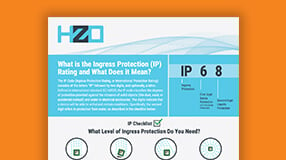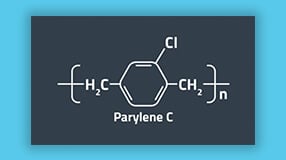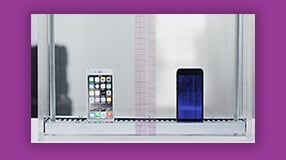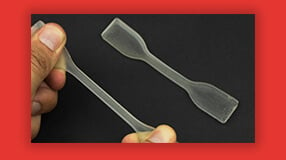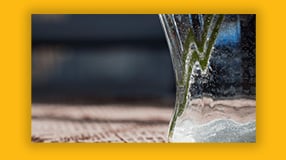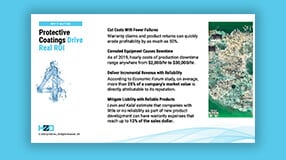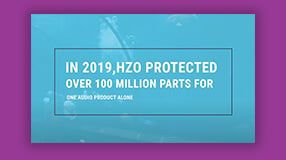IP Ratings Decoded: IP57, IPX7, IPX5 Explained

Download the IP Checklist
Download HZO's Ingress Protection (IP) Checklist Your shiny new smartwatch claims to be IP57 waterproof, your new phone claims to be water protected, and a slew of new electronic devices are entering the market boasting 'water resistance.' Yet, these devices may not survive an encounter in the rain or an accidental drop in the toilet. So, how do you know what's what in the world of water-protected electronics?
Clever advertising and loosely applied water protection ratings have led consumers to believe that the stamp of an IP rating or a water-resistant buzzword means that the device in question can take a dip in the pool or, at the very least, hack it in the shower. But sadly, that's usually not the case.
So What's The Problem?
As manufacturers have tried to meet the growing consumer demand for water-resistant electronics, they have emphasized citing IP Code ratings. As beneficial as these ratings can be in certain situations, there is one major flaw: they don't tell the whole story. Here's the truth about IP and IP57 ratings.
What Does IP57 Really Mean?
An IP rating is a standard for water resistance in electronics. Water resistance is measured by numbers 1 through 9.
There are two types of IP ratings, which include two-digit IP ratings. Two-digit IP ratings indicate both water and particle resistance. The first digit displays particle and solid resistance, while the second digit shows the water protection level. If you own an electronic device with an IP rating of IP57, that device offers level 5 particle resistance and level 7 water protection.
One-digit IP ratings: Unlike two-digit ratings, one-digit IP ratings are metrics designed to show water resistance only, which means an 'X replaces the first digit.' For example, a rating of IPX7 would offer level 7 water protection out of 9 levels and is defined as can be submerged up to 1 meter in water for 30 minutes.
Is IPX7 Waterproof?
Well, that's kind of a long story. When a device claims to be waterproof or water-resistant, it's important to understand that these terms may not always carry the meaning you expect. Waterproof means impervious to water and all of the destruction that comes with it. Ultimately, it all depends on the manufacturer and the level of water resistance you're looking for.
Different IP ratings offer different types of protection, and you need to understand them if you want to grasp better whether your IPX5, IPX7, or IP57 device is genuinely waterproof. Following vague waterproof marketing terms can be challenging when you have little to no reference for what the actual numbers and ratings mean. Let's go through a few of the IP rating standard basics.
The water protection numbers exist on a scale of 1 to 9, while the solid protection metric operates on a scale from 1 to 6. Some of the most common numbers used to indicate high levels of water resistance are IPX5, IPX7, and IP57, each of which offers a different type of protection:
What is IPX5?
IPX5: An IPX5 rating implies that a device can endure direct contact with water that's projected from a nozzle. IPX7: IPX7 is one of the highest ratings, and ideally, it means that a device is durable enough to survive after being submerged in up to 3 feet of water for 30 minutes.
What is IP57?
IP57: IP57 indicates a high (though not the highest) protection level from dust and water exposure.
What is the Issue with IP Ratings?
The issue with these ratings is that it can be hard to tell whether they'll apply to real-world situations. To gain an IP certification, all an electronics manufacturer must send their device to a third-party laboratory to run the standard tests. If one (yes, just one) passes the test, the entire device line gets the determined IP certification. See the problem here? So, one tenacious device passes the IPX7 test, and the whole team gets to play as 'IPX7.' And with the sparkling new certification comes a heaping pile of consumer confusion.
"Does IPX7 mean waterproof?" "Does IP57 mean water-resistant?" "What can I actually do with my device?" When Traditional Ratings Fail To truly understand what your 'water-resistant device' is capable of, you need to read, and we might add, carefully read the manufacturer's terms and conditions.
Let's take a hypothetical, newly introduced 'waterproof' Android, for instance. The phone is advertised as "Waterproof*. Dust-tight. Worry-free." It also maintains an IP65 and IP68 rating. But what does the asterisk mean? If we look a little closer at the fine print, we find that the phone should never be put completely underwater or exposed to seawater, salt water, chlorinated water, or liquids such as drinks and juices. And if the ports and covers aren't firmly closed, all protection bets are off.
So What's The Answer?
HZO is seeking to detangle the web of confusion that is currently surrounding the 'waterproof electronics' market by offering a superior water protection solution. A solution without limits, boundaries, or fine print. Using Parylene conformal coatings, HZO creates a thin film barrier between the vital circuitry of the electronics and any liquid that could potentially harm it. No need for seals, gaskets, port covers, or cases, and in theory, no real need for confusing IP standards. We have had a computer running fully submerged in tapwater in our lobby for two years now. HZO Protection is the standard.

Superiority of Parylene Conformal Coatings
Parylene coatings are renowned for their uniform and pinhole-free coverage, even at thicknesses as low as a few micrometers. Parylene's chemical and physical properties provide outstanding resistance to moisture and contaminants, essential for electronic components in IP57 devices. Not only is Parylene's molecular structure optimal for creating a barrier against various types of ingress, but its application process ensures that it adheres without compromising performance. Its unparalleled durability, even in extreme conditions, underscores why, when it comes to device protection, Parylene conformal coatings are the preferred method for ensuring compliance with stringent protection standards like IP57.
If you're looking for a solution that can make your products more robust and, well, better, we're here to help. Our coatings can make a wide range of electronics more usable from almost any location, enhancing product reliability and—even better—saving money. Contact us today to learn more from a skilled professional about how we can help your product exceed IP57 and IPX7 ratings.
NEMA vs IP Ratings Explained
Dielectric Constant of Insulator Materials: Formula, Table of Values
Waterproof Design With IP Ratings
Multi-skilled marketing director with more than 18 years’ experience in growing the customers and brands of diverse companies. Ability to meet diverse marketing challenges by utilizing experience, skills, and creativity. Expertise in demand generation, content, branding, design, and communications.
Additional Resources

Understand the Capabilities of Thin Film Coatings With Our Resource Page

Understand UL94 Rating - Testing, How to Choose a Material, and More

What's the Difference Between Hydrophobic Coatings and Hydrophilic Coatings?

Dielectric Constant of Insulator - Materials, Formula, Table of Values

Tensile Strength at Yield - Testing, Definition, Material Selection

Young's Modulus of Polymers - Measurement, Calculation, Material Selection

Volume Resistivity - Definition, Measurement, Implications For Product Design

Polymer Glass Transition Temperature – Material Properties, Impact

What is Coefficient of Linear Expansion? Formula, Units & More
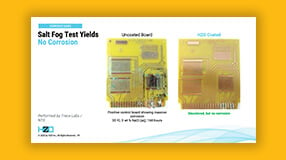
Learn About the Thin Film Coating Properties and Processes In Our Webinar

The Difference Between "Hydrophilic and Hydrophobic" Coating Properties

Learn about Protective Coating Methodologies With Our White Paper
